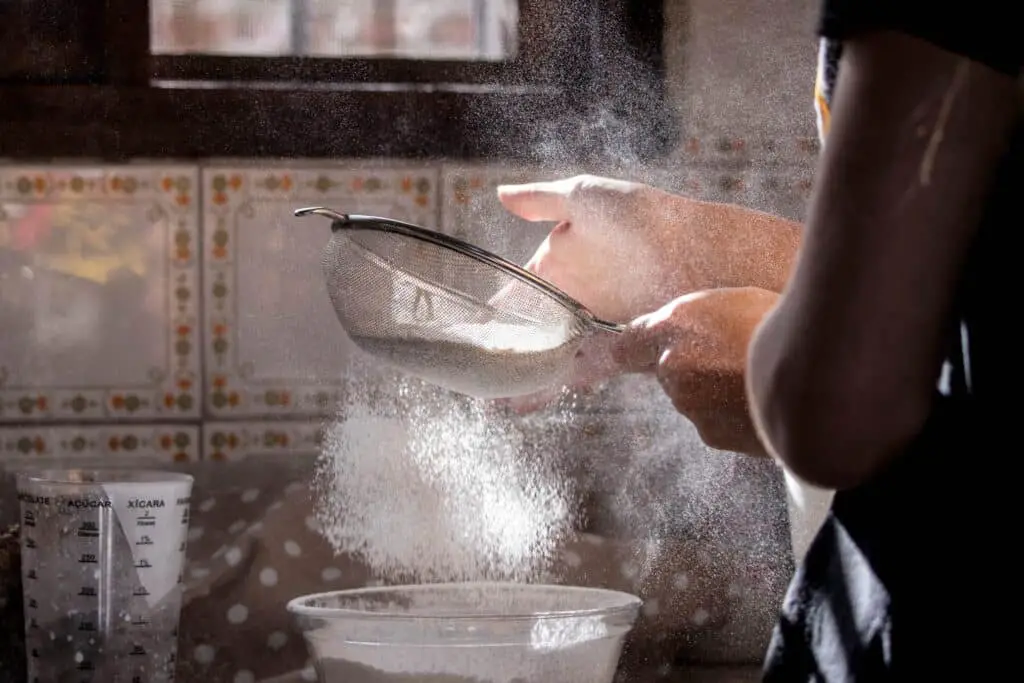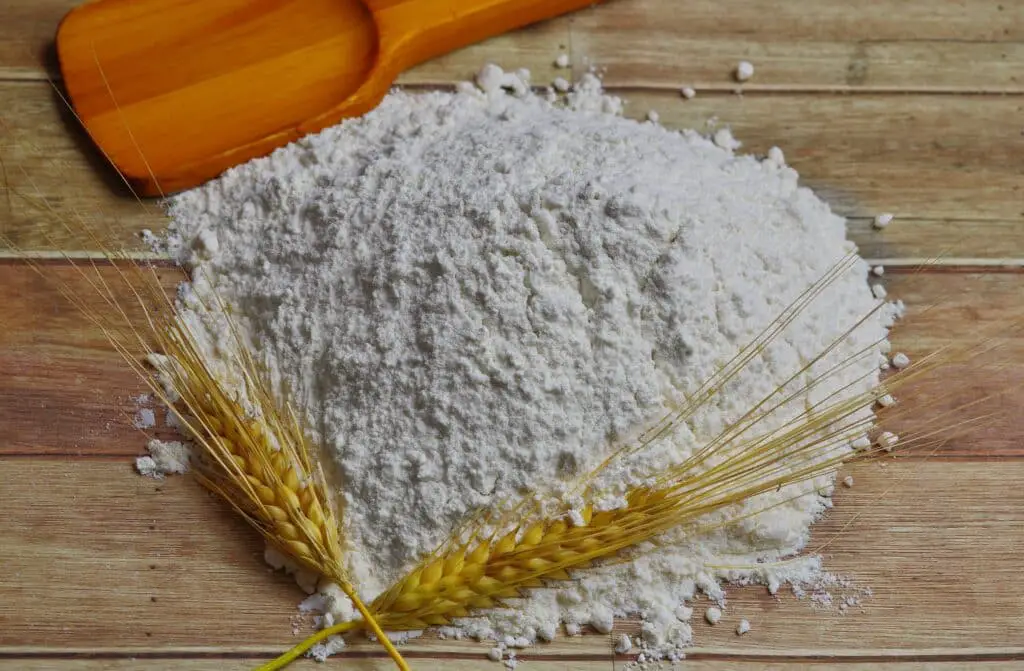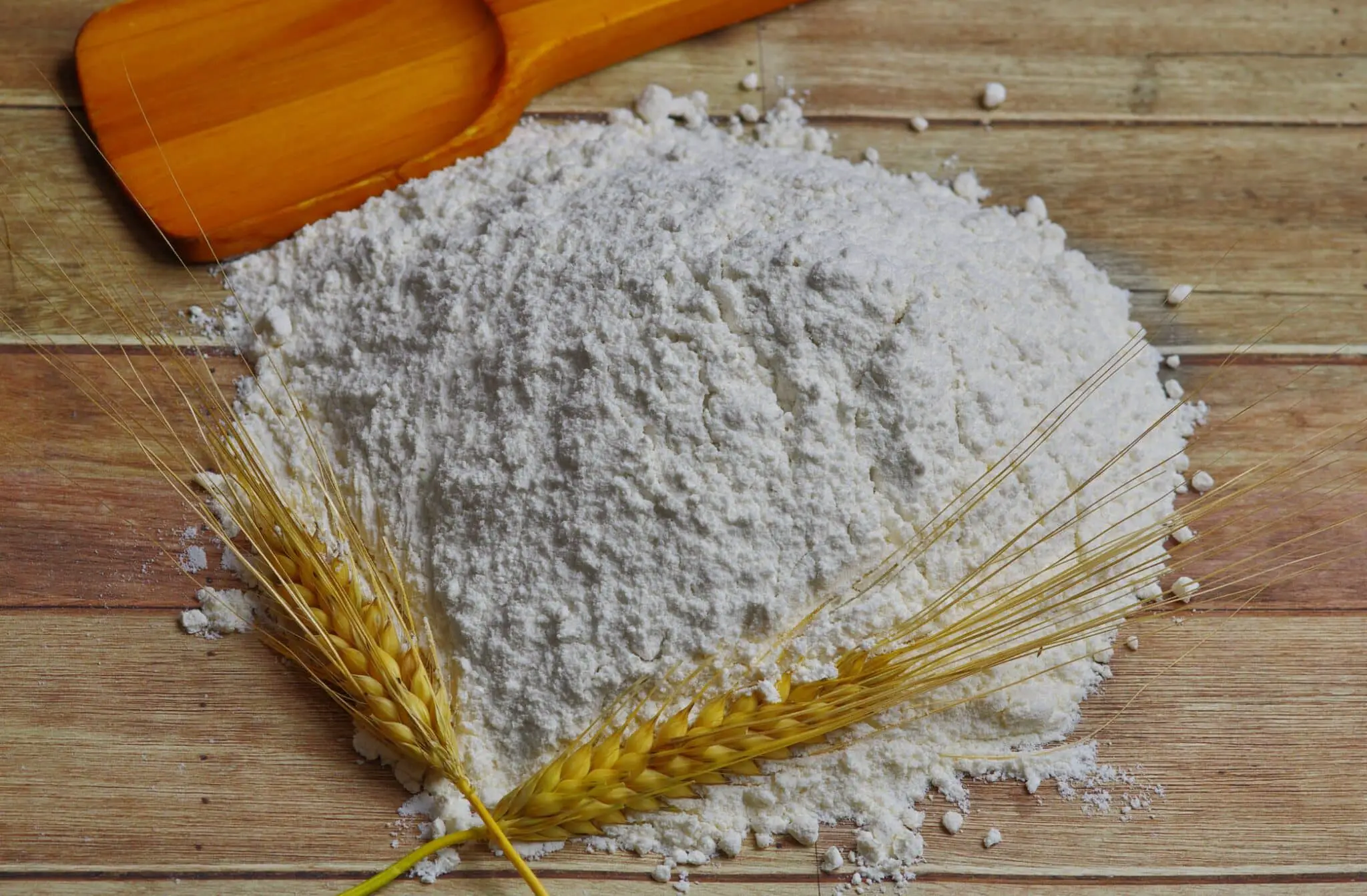Table of Contents
All-purpose flour has a long history, and over the years, it has found its way into many pantries and cupboards across the world. It’s so popular because of how versatile it is and can be used in different recipes in the cooking world from cakes to casseroles. In this article, we will explore what all-purpose flour is, what uses there are for it in the kitchen, and alternatives to AP-Flour in case you don’t have it on hand or want to replace it for another reason like being gluten-sensitive.
What Is AP Flour?
All-purpose flour (plain flour in the UK) is a white powder without a raising agent. There are other types of flour like bread flour, cake flour, and almond flour which all have different properties, but none are as versatile as all-purpose flour.
One of the things that make all-purpose flour so versatile is that it contains less gluten than other types of flour. Although this makes for a less strong dough than say bread flour, it’s easier to work with as it’s stretchy by nature. This makes all-purpose flour an excellent flour for baking pies as the dough needs to be rolled out.
All-purpose flour is known for its white, powdery look. The reason why it’s so bright is that it’s bleached with bleaching agents like chlorine gas and benzoyl peroxide to speed up the flour’s ageing process. You can get unbleached AP Flour that doesn’t get chemical treatment, however, bleached all-purpose flour results in a softer texture. This effect is desirable for many baking goods like cakes, pies, and cookies.
What Is the History of AP Flour?
All-purpose flour can be traced back as far back as 6000BC. During this time, farmers would make flour dates using crushed wheat seeds, however, the Romans were the first to actually grind seeds on cone mills. It wasn’t until 1779 when the first steam mill was erected in London, marking the first-time flour was mass-produced. Manufacturers started to enrich flour with iron, niacin, thiamine, and riboflavin between the 1930s-40s. Then in the 1990s folic acid was added to the list of nutrients used to enrich flour.
In the times of the industrial revolution, manufacturers struggled to preserve flour because of factors like transportation distances and a slow distribution system which reduced its natural shelf life. The long production and distribution cycles meant that there was ample opportunity for the flour to be exposed to oxygen. This was problematic as the reason for flour’s initial short shelf life was due to the fatty acids of the germ which reacted the moment they were exposed to air. Once the fatty acid oxidized the flour would become rancid. This problem was made worse depending on the climate and quality of the grain.
Modern-day flour production is not nearly as difficult to preserve. Typically, it takes 7-9 months for wheat to grow but once manufacturers have enough grains to start making flour, they have modern-day preservation methods at their disposal.
What Is the Best Way To Store Flour?

Flour has an impressive shelf cycle and can keep for up to a year. To ensure that your flour doesn’t turn bad you should store it in a cool, dry place. Storing flour can be trickier if you live in a humid environment. If you are in a hot environment, the best way to store flour is to put it in an airtight container in the refrigerator. You can also bulk buy flour and store it in the freezer in the same way. Make sure that your storage containers are moisture-proof as moisture can make the flour go bad.
What Is the Difference Between AP-Flour and Self-Rising Flour?
All-purpose flour is made entirely from ground wheat, whereas self-rising flour is a mixture of baking powder and all-purpose flour. Because one contains a natural rising agent and the other does not, it’s important to follow the recipe specifically as they will result in different bakes. That being said, you can make homemade self-rising flour if you have baking powder on hand. But all-purpose flour is the most commonly used flour.
Uses of AP Flour in the Kitchen
There are lots of uses of AP Flour in the kitchen, but it is most often used in the following scenarios:
Baking
Most bakers are well equipped with flour in their kitchen because a lot of baking recipes use ap-flour. There are some baking recipes, like angel food cake or white cake which call for even finer flours like cake-flour for a crumblier finish, but generally, you will need to have AP-flour on hand if you want to bake. Baking doesn’t just mean baking cakes. You can also use AP flour to bake freshly made pizza crust, pie crust, cookies, bread, and biscuits. The possibilities are endless!

As a Thickening Agent
Lots of recipes require you use a thickening agent to thicken up a liquid without impacting the other properties of said liquid. All-purpose flour is one of the most popular thickeners to use in recipes like soups, sauces, and casseroles. It can also be used for things like pie fillings, for instance, in apple pie, to bind all the juices together making for a richer final product.
Cleaning
Though this might surprise some people, you can actually use all-purpose flours in several cleaning scenarios around the kitchen. Typically, it’s added to some kind of liquid like washing up liquid or white wine vinegar, into a cleaning bottle before it’s sprayed onto a surface. Adding all-purpose flour into your cleaning aids promotes shinier results as the thickness of the flour allows you to get rid of tougher stains that might appear in the kitchen.
What Can I Use Instead of AP Flour?
If a recipe calls for flour, chances are, it will ask you to include all-purpose flour. While we always recommend following the recipe especially if you want to get the best results, there are times where you can substitute all-purpose flour. Popular substitutes for AP flour include wholemeal flour, although this will add a brown hue if you are using it to bake so think carefully about what you want the final product to look like. It will also make the product much denser. For a lighter product, use cake flour. It’s essentially all-purpose flour, however, it’s been even more refined than its counterpart, so it’s great for those wanting to make something airy. For those that are sensitive to gluten, you could also use gluten-free flour, but you will need to remember to adjust the measurements.










